It takes about three to five days for a cat to pass a piece of ribbon that they swallowed.
It can also happen in the first 48 hours, but it largely depends on the other intestinal contents and the pet’s ‘bathroom’ habits.
What To Do If Your Cat Swallowed A Ribbon & Is Throwing Up
When cats swallow things they are not supposed to, they almost always require immediate veterinary assistance.
Ask a Vet
If you think your cat may have swallowed a ribbon we recommend you speak with a vet ASAP.
allows you to talk in real-time to veterinary experts for a small fee.
The reason for this is that you can’t know for sure whether your cat is going to be unlucky enough and develop intestinal blockage as a result of ingesting a foreign object.
If your cat swallowed a piece of ribbon and is now vomiting, the chances of it not having gone through the small intestine are very high.
The cat’s body is now rejecting the ribbon and trying to expel it by causing your cat to throw up.
One crucial thing we have to note in this case is that you should not try to induce vomiting if you’ve seen your cat eating a piece of ribbon or any other foreign body such as .
Doing so can be dangerous and unhealthy.

There have been cases where people have used pencils or other objects to try and ‘catch’ the ribbon from their cats’ mouths.
Not only did they suffer some amount of damage (no cats like having their mouth handled in that way), but they also inflicted wounds onto their pet’s oral cavity.
Take your cat to the veterinary clinic right away.
A professional will know what to do if your cat keeps heaving in an attempt to release the ribbon they have ingested.
Will Cats Usually Pass A Piece Of Ribbon?
Typically, yes.
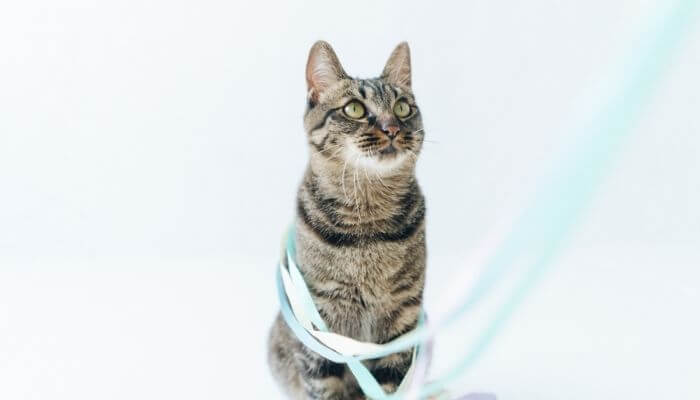
While ribbons can’t be digested because they are artificial items that cats are not supposed to eat, they can usually be expelled through the faeces in a matter of a couple of days or so.
While ribbons are less harmful compared to other foreign objects such as earrings or olive pits, they can still cause health issues.
First of all, the outcome you can expect also depends on how long the ribbon is.
If it’s rather long, it can lead to intestinal obstruction or occlusion, which can be life-threatening.
If your cat simply nibbled on one edge of the ribbon and managed to ingest that tiny part, they are likely to pass it naturally with no problems.
Can Cats Die From Eating Ribbon?
Yes, cats can die from eating ribbon.
Ribbons are foreign objects, and any foreign object can cause havoc inside your cat’s digestive system.
Some complications can lead to the local blood flow being restricted or stopped altogether.
If that happens, your cat can suffer from shock in a matter of several hours to one day.
Most cats manage to survive for two to three days even if this happens, but their general health is going to be severely affected.
You might notice symptoms such as diarrhoea, vomiting, lethargy, or significant changes in your pet’s routine.
Cat Ate A Ribbon But Is Acting Normal
All cats are unique in more than one way, so it is impossible to predict just how your own will react to having eaten a ribbon.
If they are feeling and behaving normally, you might think that there’s no need for you to feel concerned.
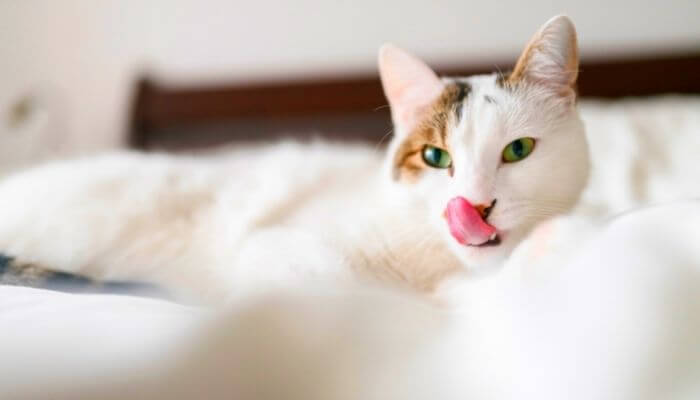
The truth is that a normal digestive process takes some time, so the ribbon might not have yet caused an issue.
As such, even if right now your cat is acting as they always do, that does not mean that they will do the same a couple of hours from now.
The best thing to do would be to take your cat to the veterinary clinic, regardless of whether they are momentarily alright or not.
What To Do If Your Cat Ate A Curling Ribbon
The thickness and the length of a curling ribbon can cause clinical issues that can be severe in cats.
If your cat ate a long curling ribbon, you should go to the animal hospital right away.
Even if she is not showing any symptoms, the least you could do would be to call your vet so that they can give you some type of guidance.
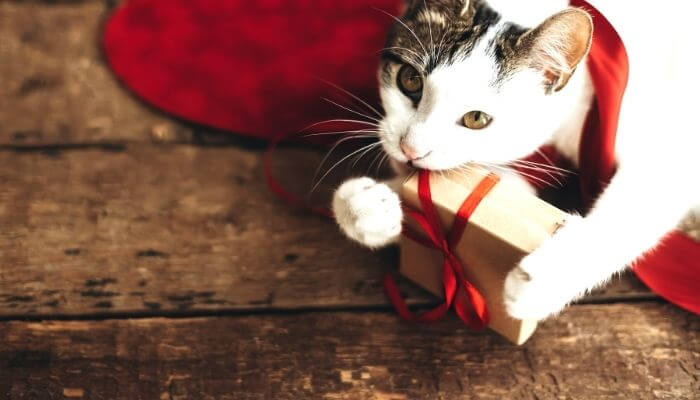
The thicker and wider curling ribbon varieties currently used for wrapping gifts can be more dangerous for cats.
They can cause choking.
They also increase the chance of your pet developing an intestinal occlusion or obstruction.
What To Do If Your Cat Ate A 6 Inch Ribbon
Any length of ribbon should make you feel a little worried about whether your cat will be fine or not, but a 6-inch one should convince you to consult your veterinarian as soon as possible.
It is impossible for you to predict how that ribbon piece might move inside your cat’s digestive tract.
It could mix with the faecal matter.
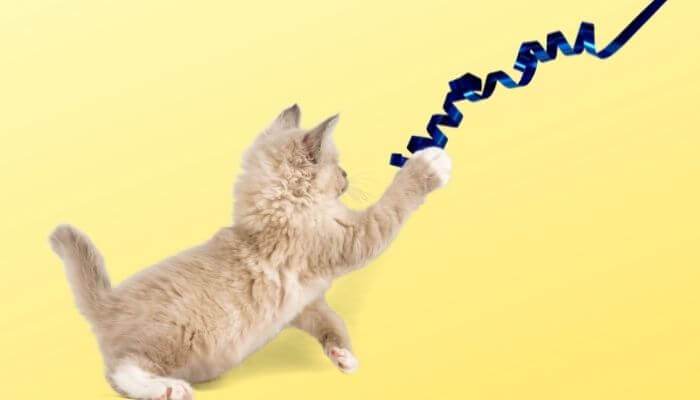
It could also wrap around it, making your cat strain when ‘going to the bathroom’ the next time.
But it could also stick to the mucous membrane present in your cat’s gut and cause a variety of issues as a consequence of that.
Taking your cat to the vet is the best way of preventing all of these health complications.
Your vet can diagnose your pet’s condition by using a variety of tests, such as an ultrasound, contrast x-rays, and an endoscopy.
They might also administer safe laxatives so that your cat manages to release the ribbon through their stool faster.
In any case, your pet needs to be kept under observation until they eliminate this foreign object.
Surgery Cost For Getting A Ribbon Removed From A Cat’s Stomach
This procedure can set you back anything between $800 (£607) and $1,000 (£760).
Your might cover at least half of this sum, which is why we urge you to get cat insurance right after you have adopted them.
But surgery isn’t the only way the ribbon in your cat’s system can be retrieved.
These days, especially if you bring your cat to the animal hospital as soon as possible after seeing them eating the ribbon, vets can use a procedure called .
An endoscope is normally fitted with a camera at the end so that the vet can look at the contents of your cat’s digestive system.
However, one designed for interventional endoscopy also has a section to which the veterinarian can attach a tool that, in this case, would look like a mini-tweezer.
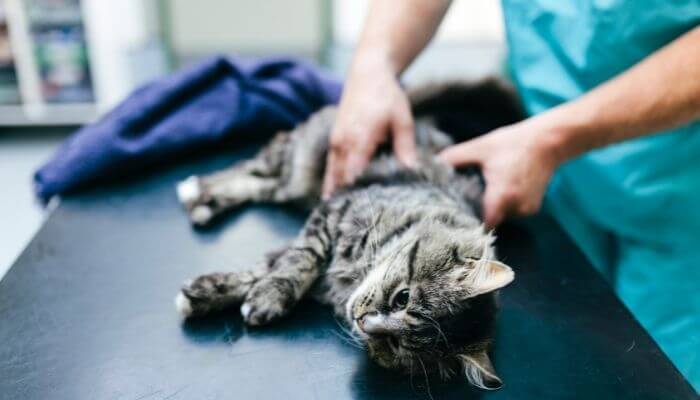
Performing an endoscopy is typically recommended if a contrast x-ray reveals that the ribbon has not entered your cat’s intestines.
If it’s still in their stomach, it can be conveniently retrieved with the endoscope, especially since the visibility inside the stomach is higher than it is in the gut.
However, even if the ribbon has entered the gut and has ended up in the colon, for example, it could be retrieved through a procedure called interventional colonoscopy.
Of course, there are risks to all of these procedures since the endoscope needs to be handled by a professional with extensive knowledge of how to use it.
This is necessary as otherwise, your cat’s digestive tract lining could be scratched or sustain damage by accident.
While the cost of an interventional endoscopy is very similar to that of surgery, it is usually safer.
Your cat will still have to be sedated, but there will be no one opening up their abdominal cavity with a scalpel, for example.
Consequently, your pet will recover a lot faster.
Generally an endoscopy is usually safer than surgery.

